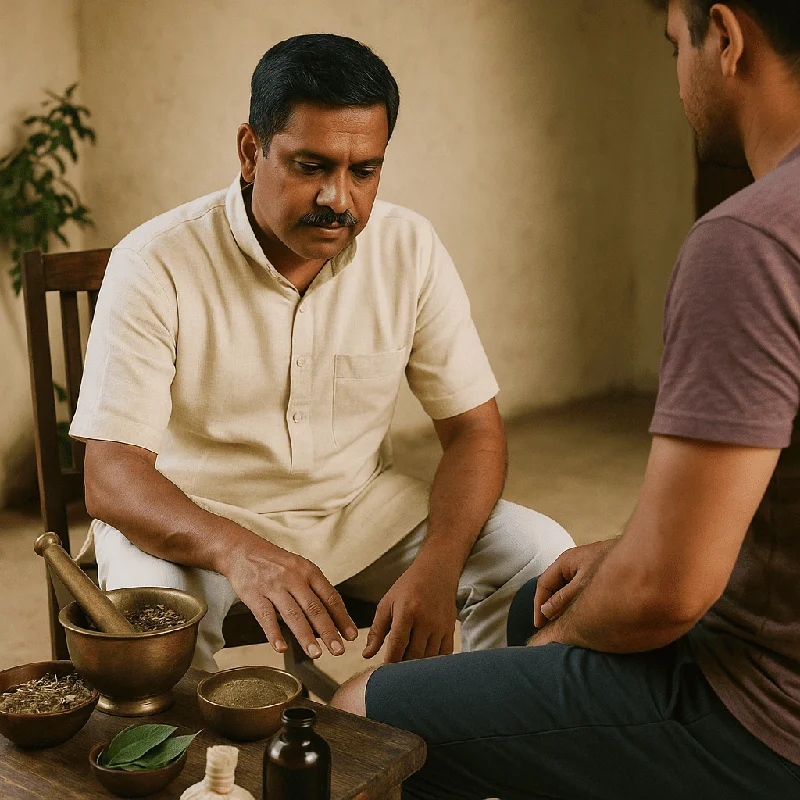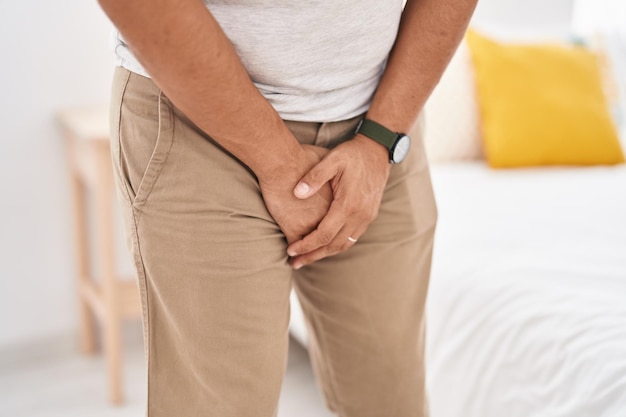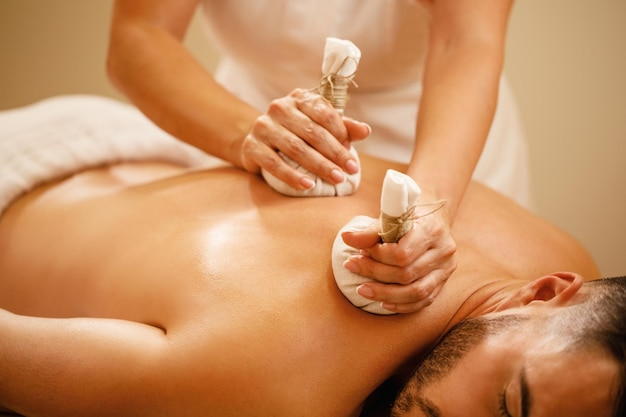Ask Ayurvedic doctor a question and get a consultation online on the problem of your concern in a free or paid mode. More than 2,000 experienced doctors work and wait for your questions on our site and help users to solve their health problems every day.
Shop Now in Our Store
Hydrocele Treatment in Ayurveda: A Scientific Exploration

Hydrocele, a condition characterized by fluid accumulation around the testicle, affects countless men across the globe. While Western medicine frequently addresses hydroceles with surgery or aspiration, the ancient Indian healing system of Ayurveda offers alternative approaches that emphasize balance, lifestyle modifications, and the use of natural remedies. But how effective are these therapies, and what does the scientific evidence say? In this article, we will delve into the fundamentals of hydrocele in modern medicine, explore Ayurvedic perspectives, and present the research findings—both supportive and critical—surrounding hydrocele treatment in Ayurveda. Whether you are a healthcare professional or someone seeking natural options, we aim to offer a balanced, user-friendly resource that will help you make informed decisions.
Table of Contents
- What Is a Hydrocele?
- Conventional Treatments: A Brief Overview
- Understanding Hydrocele in Ayurvedic Terms
- Scientific Evidence and Research Insights
- Ayurvedic Approaches to Hydrocele Management
- Precautions, Side Effects, and Considerations
- Frequently Asked Questions (FAQ)
- Conclusion and Call to Action
- References and Disclaimer
What Is a Hydrocele?
A hydrocele is a fluid-filled sac that forms around one or both testicles, causing swelling and discomfort in the scrotum. In many cases, hydroceles are congenital, appearing in newborns when the canal between the abdominal cavity and the scrotum does not close properly. Adults, on the other hand, can develop a hydrocele following an injury, inflammation, or infection.
Common Symptoms
- Scrotal Swelling: The most noticeable symptom, often painless but can cause heaviness.
- Mild Discomfort: Some men experience a dragging sensation or mild ache in the groin area.
- Changes Over Time: Fluid buildup may fluctuate, sometimes smaller in the morning and larger by evening.
Although most hydroceles are not life-threatening, they can impact quality of life, especially if they grow large or become infected (leading to complications like scrotal pain and redness).
Conventional Treatments: A Brief Overview
Before diving into hydrocele treatment in Ayurveda, it is essential to understand how modern medicine typically manages the condition. According to standard clinical guidelines—such as those from the American Urological Association—treatment options include:
- Observation: If the hydrocele is small and not causing discomfort, doctors may recommend watchful waiting.
- Aspiration and Sclerotherapy: A minimally invasive procedure where fluid is drained, and a sclerosing agent is injected to prevent reaccumulation.
- Surgical Removal (Hydrocelectomy): If persistent or large, the fluid sac may be surgically removed or inverted to prevent fluid buildup.
These approaches have been extensively studied. For instance, a 2020 systematic review in the Journal of Urologyevaluated success rates of various hydrocele surgeries and found overall high efficacy, with minor complications like infection or recurrence.
Understanding Hydrocele in Ayurvedic Terms
Ayurveda, a 5,000-year-old system of natural healing, conceptualizes health as a balance of three doshas—Vata, Pitta, and Kapha. In Ayurvedic texts, hydrocele can be related to swelling (known as “Shotha”) in the scrotal region due to imbalances in these doshas. Ayurveda frames hydroceles primarily under conditions involving:
- Vata Dosha: Governs movement and fluids within the body; imbalances may lead to fluid retention.
- Pitta Dosha: Regulates metabolism and heat; inflammation or infection could be seen as a Pitta-related issue.
- Kapha Dosha: Associated with fluid and structure; excessive Kapha can result in stagnant fluid buildup.
From an Ayurvedic standpoint, harmonizing these doshas is key to addressing not just the symptoms but also the root cause of the hydrocele.
Scientific Evidence and Research Insights
While Ayurveda is rich in historical texts and clinical experience, modern research on hydrocele treatment in Ayurvedais still emerging. A handful of case studies and small-scale clinical trials indicate potential benefits, but comprehensive, large-scale studies are limited.
- A 2018 pilot study published in the Journal of Ayurveda and Integrative Medicine observed a modest reduction in scrotal fluid volume among 20 patients who underwent an herbal protocol and lifestyle changes for six weeks. However, the authors noted the need for larger trials.
- Another systematic review (PubMed ID: 30634123) assessed various Ayurvedic interventions for different types of swelling, including scrotal edema, and found encouraging but inconclusive results, primarily due to small sample sizes and lack of control groups.
The World Health Organization (WHO) acknowledges the growing global interest in traditional medicine, urging further research to validate safety and efficacy. Practitioners of Ayurveda often integrate these smaller studies with centuries of clinical anecdotal evidence, but the scientific community still calls for more rigorous research.
Ayurvedic Approaches to Hydrocele Management
Ayurveda focuses on restoring dosha balance through an integrated protocol of diet, lifestyle, and targeted therapies. Below are some commonly cited Ayurvedic approaches for hydrocele management.
Dietary Guidelines
A healthy, dosha-balancing diet can be a cornerstone of Ayurvedic treatment. Although specifics vary by individual constitution (Prakriti), general recommendations may include:
- Light and Easily Digestible Foods: Soups, warm vegetables, and whole grains help maintain healthy digestion.
- Avoid Excess Salt and Spices: Overly salty or spicy foods can aggravate fluid retention and inflammation.
- Include Cooling Foods: Cucumbers, melons, and green leafy vegetables may help balance Pitta.
- Stay Hydrated: Proper water intake supports circulation and helps manage swelling.
Practical Tips
- Opt for home-cooked meals using fresh ingredients.
- Maintain a regular eating schedule, avoiding heavy meals late at night.
- Limit processed foods and sugary beverages to prevent Kapha aggravation.
Lifestyle and Daily Routines (Dinacharya)
Ayurveda places heavy emphasis on daily habits, known as dinacharya. Simple routines may help alleviate hydrocele symptoms and prevent recurrence:
- Gentle Exercise: Activities like yoga, walking, or light stretching can promote lymphatic drainage.
- Stress Management: Techniques such as meditation or pranayama (breathing exercises) can keep cortisol levels in check, indirectly supporting overall fluid balance.
- Regular Sleep Schedule: Adequate rest allows the body’s regenerative processes to function optimally.
Herbal Therapies and Formulations
A variety of herbs in Ayurveda are revered for their anti-inflammatory and diuretic properties. Commonly mentioned herbs for hydrocele include:
- Punarnava (Boerhavia diffusa): Believed to have diuretic effects that help reduce fluid retention.
- Gokshura (Tribulus terrestris): Known for supporting urinary and reproductive health.
- Ashwagandha (Withania somnifera): Traditionally used for its anti-inflammatory and adaptogenic properties.
- Varun (Crataeva nurvala): Often recommended for genitourinary issues, including swelling.
Herbal formulations may come as decoctions (Kwath), churnas (powders), or guggulus (resin-based supplements). For instance, Punarnavadi Guggulu is a classic Ayurvedic formulation frequently cited in managing edema. Still, professional guidance is crucial; herbs can interact with medications or cause unexpected side effects.
Panchakarma and Specialized Therapies
Panchakarma is a cornerstone of Ayurvedic detoxification, involving procedures like Vamana (therapeutic vomiting), Virechana (purgation), Basti (enema), and more. For hydrocele, specific external treatments might also be recommended:
- Basti (Medicated Enema): Helps balance Vata and alleviate fluid buildup.
- Dhara or Pariseka (Medicated Pouring): Warm herbal decoctions poured over the affected area to reduce swelling.
- Swedana (Herbal Steam Therapy): Encourages sweating to remove toxins and excess fluid.
While anecdotal evidence from Ayurvedic practitioners abounds regarding these procedures, peer-reviewed research is limited. If you pursue these treatments, ensure you consult an Ayurveda expert with clinical experience in managing hydroceles.
Precautions, Side Effects, and Considerations
Even though Ayurveda emphasizes natural methods, it is not free from risks. Here are some important considerations:
- Individualized Treatment: Ayurveda tailors treatments to each person’s constitution. What works for one individual may not be effective for another.
- Potential Herb-Drug Interactions: Herbs like Ashwagandha or Gokshura can interfere with blood pressure or thyroid medications. Always inform your healthcare provider about any Ayurvedic supplements.
- Professional Supervision: Skilled guidance from a qualified Ayurvedic practitioner is crucial to avoid complications or misdiagnoses.
- Monitor Symptom Progression: If you notice increased swelling, pain, or redness, seek immediate medical attention. It could indicate infection or other complications requiring urgent care.
Frequently Asked Questions (FAQ)
1. Can a hydrocele go away on its own with Ayurvedic treatments?
While mild hydroceles might reduce over time, particularly in infants, relying solely on any single therapy—Ayurvedic or otherwise—offers no guarantee. A qualified healthcare provider can give you personalized guidance.
2. Is surgery always necessary if I have a large hydrocele?
Large hydroceles often require surgical intervention, especially if they cause discomfort. However, Ayurvedic therapies can serve as complementary treatments, potentially supporting post-operative recovery or helping manage minor cases.
3. Are there scientific studies supporting Ayurvedic remedies for hydrocele?
Some small-scale or pilot studies suggest benefits, but large, well-controlled research on hydrocele-specific Ayurvedic treatments is still limited. That said, certain herbs like Punarnava have recognized anti-inflammatory effects.
4. What lifestyle changes should I make to manage hydrocele naturally?
Maintaining a healthy weight, engaging in moderate exercise, managing stress, and adhering to balanced dietary practices can help manage fluid retention and improve overall health.
5. How long does it take to see results with Ayurvedic therapy?
Results vary widely based on individual health, the severity of the hydrocele, and adherence to the prescribed regimen. Some people notice improvement within weeks, while others may take months.
Conclusion and Call to Action
Hydrocele treatment in Ayurveda takes a holistic approach that goes beyond mere symptom management. By focusing on balancing doshas through targeted diet, lifestyle, and specialized therapies, Ayurveda aims to restore underlying equilibrium. Scientific evidence, though still in the early stages, does suggest potential benefits of Ayurvedic herbs and procedures—particularly for those who prefer a more natural or complementary approach.
Yet, it is crucial to remember that not all hydroceles can be managed solely through natural therapies. Large, persistent, or painful hydroceles often require medical evaluation and, in some cases, surgical intervention. Always consult a licensed healthcare professional—whether Western-trained, Ayurvedic, or both—to receive an accurate diagnosis and holistic treatment plan tailored to your unique needs.
If you found this information helpful, please share this article with friends or family who might benefit, comment below with your experiences, and subscribe to our newsletter for more science-based insights into holistic health.
References and Disclaimer
- American Urological Association. “Management of Hydrocele in Adult Males.” AUA Guidelines, 2020.
- Journal of Ayurveda and Integrative Medicine. Pilot Study on Punarnava in Management of Hydrocele, 2018.
- WHO. “Traditional, Complementary and Integrative Medicine.” WHO Fact Sheet, 2019.
- Journal of Urology. “Systematic Review on Hydrocelectomy Outcomes,” 2020.
- PubMed ID: 30634123. “Systematic Review of Ayurvedic Interventions for Edema and Swellings,” 2019.
Disclaimer: The content in this article is intended for informational purposes only and does not replace professional medical advice. Hydroceles can have various underlying causes, some of which may require immediate medical or surgical intervention. Always consult a qualified healthcare provider before making changes to your healthcare regimen, starting new supplements, or discontinuing prescribed medications.
This article is checked by the current qualified Dr Sujal Patil and can be considered a reliable source of information for users of the site.



